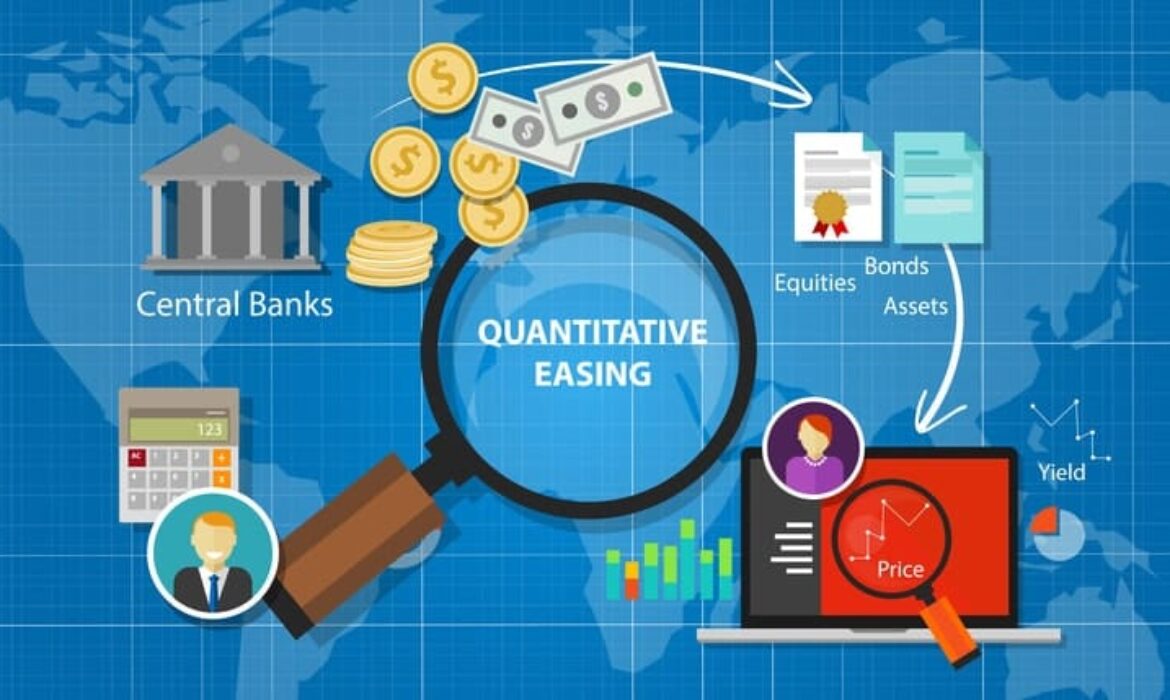
Quantitative easing (QE) is like the central bank’s financial magic trick—flooding the economy with money to boost growth when times are tough. But like any magic, it comes with risks. From inflation to currency swings, these hidden dangers can quickly turn a short-term fix into a long-term headache. Ever wondered what could go wrong when central banks print money? Understanding potential financial risks is critical, and expert insights can offer essential clarity. Connect with education resources similar to this website and learn right from professionals.
Inflationary Pressures and Hyperinflation Risks
Quantitative easing (QE) often aims to stimulate economic growth by increasing the money supply. However, when too much money enters circulation too quickly, it can trigger inflation, where the cost of goods and services rises.
In some cases, this can spiral out of control, leading to hyperinflation. This extreme scenario sees prices skyrocketing at an alarming rate, making everyday goods unaffordable for many.
Think of it like this: if everyone suddenly had more money to spend, but the supply of goods remained the same, prices would naturally go up because demand exceeds supply. That’s basic economics at work.
In the short term, a little inflation might not seem like a bad thing—it can even be a sign of a growing economy. But if left unchecked, inflation can erode purchasing power. Imagine going to the store and finding out that the loaf of bread you bought last week has doubled in price overnight. It’s a nightmare scenario that no one wants to live through.
Governments and central banks must carefully monitor the situation to avoid the dangers of hyperinflation. It’s a tightrope walk; increasing the money supply too much can tip the balance, leading to an economic crisis where currency becomes virtually worthless. So, it’s important to keep a close eye on inflation rates when QE policies are in place. Have you ever wondered how central banks manage this delicate balance?
Asset Bubbles and Market Distortions
Quantitative easing can sometimes cause assets like stocks, bonds, or real estate to inflate beyond their real value, creating what’s known as an asset bubble. This happens because the influx of cheap money often encourages investors to put their funds into riskier assets in search of higher returns. When many investors do this, the prices of these assets can soar to unsustainable levels. It’s like blowing air into a balloon; at some point, it’s going to pop.
For example, during periods of quantitative easing, you might notice that stock markets hit record highs. On the surface, this might seem like a win for everyone involved. But if these prices don’t reflect the underlying economic realities, a sharp correction could be on the horizon. The 2008 financial crisis, fueled by the housing bubble, serves as a stark reminder of what happens when asset prices become detached from their fundamentals.
When these bubbles burst, the impact can be devastating—not just for those who invested in the overvalued assets but for the economy as a whole. Job losses, reduced consumer confidence, and even broader financial instability can follow. Imagine buying a house at the peak of the market, only to see its value plummet by 30% within a year.
That’s not just a loss on paper; it’s real money out of your pocket. So, when evaluating the benefits of QE, it’s essential to consider the potential for asset bubbles and whether the short-term gains outweigh the long-term risks.
Currency Devaluation and Exchange Rate Volatility
When a country implements quantitative easing, one of the potential side effects is currency devaluation. As the central bank pumps more money into the economy, the value of that currency might drop relative to others. This can make a country’s exports cheaper and more attractive to foreign buyers, which sounds like a good thing. But it’s a double-edged sword.
A weaker currency also makes imports more expensive, driving up costs for businesses and consumers alike. Have you ever noticed how the price of imported goods can fluctuate based on exchange rates?
Imagine your favorite foreign-made gadget suddenly costing 20% more because your currency lost value overnight. This kind of volatility can create uncertainty for businesses that rely on international trade, making it harder for them to plan and budget effectively.
Moreover, sharp currency devaluation can lead to a loss of investor confidence. If foreign investors believe that a country’s currency is unstable, they might pull their money out, leading to further economic instability. Countries with high levels of foreign debt are particularly vulnerable because a weaker currency makes it more expensive to pay back loans denominated in other currencies.
So while quantitative easing can provide a short-term boost to an economy, it’s important to consider the long-term implications for exchange rates and currency stability. Have you ever thought about how currency values impact your daily life, from the price of gas to the cost of a vacation abroad? It’s a reminder that the effects of monetary policy ripple through the economy in ways that aren’t always immediately obvious.
Conclusion
While quantitative easing can kickstart a sluggish economy, it’s not without significant risks. Inflation, asset bubbles, and currency devaluation are just a few of the pitfalls. Navigating these challenges requires careful monitoring and a steady hand. As we look to the future, the question remains: Can QE be the miracle solution we need, or is it a financial gamble with serious consequences?



